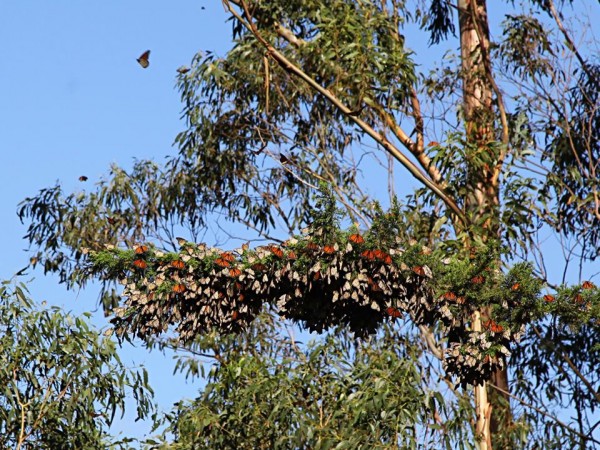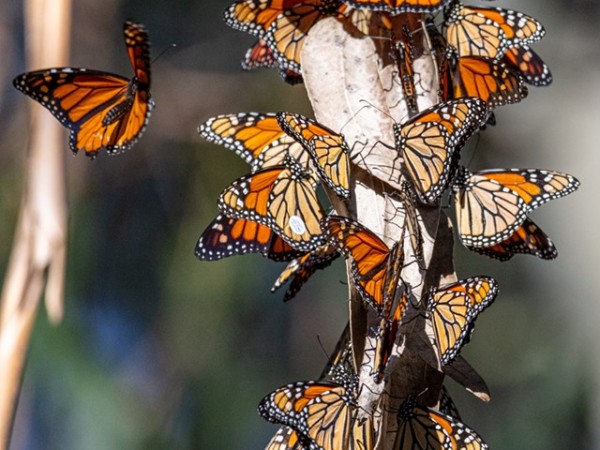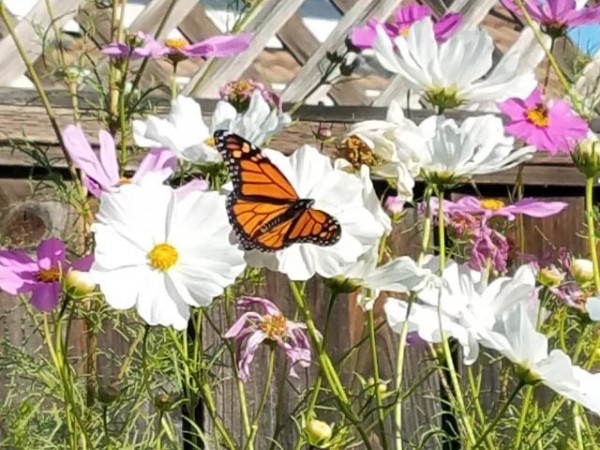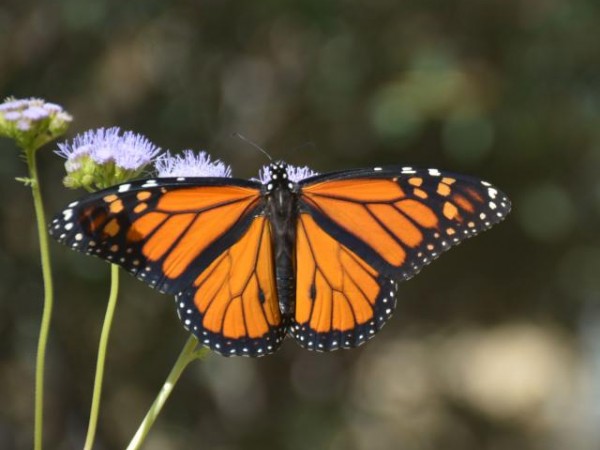Western Monarchs 2019 Fall Report #8
By Gail Morris
October 24, 2019
This week the first clusters were sighted along the California coast as monarchs reached the safety of their overwintering refuges. Warm temperatures and favorable winds are helping Western monarchs on their journey, but weather forecasts warn of changes to come. Monarchs now must hurry towards the safety of winter havens as colder weather bears down on the region soon.
Dr. David James of Monarchs of the Pacific Northwest based at Washington State University has exciting news!
“Good News! On Tuesday, our friend John Dayton, visited the 2 major overwintering sites in Santa Cruz, Lighthouse Field (LHF) and Natural Bridges (NB) and counted an estimated 950 monarchs at LHF and 750 at NB!! These are good numbers for mid-October and offer hope that we might see better numbers overwintering this winter in California. John will be visiting the Santa Cruz overwintering sites regularly this winter.”
Earlier this month Dr. David James found a fun and interesting correlation about monarchs seen en route to the overwintering sites!
“So it seems that if you give your tagged monarch butterfly a name, its more likely to be found in California! Following the sighting of [a monarch named by the tagger] Estelle in Oakland on September 25, we now have confirmation that Waldemar has been spotted at the famous Natural Bridges State Beach overwintering site in Santa Cruz! Dennis Triglia is the grand christener and now two of his named flock have been sighted in California! Both Estelle and Waldemar began life as eggs on Dennis' backyard milkweed plants in Brookings, Oregon in early August and both were released on September 7. Waldemar traveled at least 372 miles to get to Natural Bridges and was spotted on October 6 by Chung-cheng Piao who took the wonderful photo! Thank you to both Dennis and Chung-cheng for making this story (and data point) possible!”
Monarchs continue to be seen in California backyard gardens. Keep looking! Kara found one filling up on cosmos nectar in Vacaville on October 15, 2019.
“[One] Monarch came into my back yard.”
At the same time monarchs are continuing to move through Arizona in small numbers, but regularly throughout the week. Claudia found a monarch feeding in her backyard butterfly garden on October 18 in Peoria.
“Male adult Monarch in excellent condition, possibly freshly eclosed, nectaring on Gregg's Blue Mist flower in my butterfly garden. Clouds of Queen butterflies also nectaring. A. subulata milkweed present in same bed but did not land on milkweed, only the Mist Flower. Establishing butterfly garden after arriving from TX 6 months ago, goal to establish a Monarch Way Station, presently 20 milkweeds, 4 varieties, and numerous nectar sources, but newly planted so Mist Flower is most established.
Sheila found ten monarchs floating through her Tucson, Arizona, yard and refueling on October 19.
“They came in singly and in sets of 2 most of the day beginning at 7 a.m. and were feeding on the lantana and milkweed.”
What will monarchs in the West do this week? You can help us all learn more about the Fall migration in the West as it unfolds. Be sure to report every monarch sighting so we can all learn more about monarchs in the West.
Look at our Journey North Maps for ways you can report sightings:
- Adult Monarchs
- Monarch egg
- Monarch Fall Roost
- Monarch larva
- Monarch Peak Migration
- Monarch Captive-reared
Gail Morris is the Coordinator of the Southwest Monarch Study (www.swmonarchs.org), a Monarch Watch Conservation Specialist, and the Vice President of the Monarch Butterfly Fund and the Central Arizona Butterfly Association. The Western Monarch Population News is based on comments provided to Gail Morris. We hope to increase the number of sightings and therefore photos and comments entered into the Journey North database. We rely on the volunteers who communicate regularly with Gail and who agree to participate in our effort to increase awareness of the population of western Monarchs.




